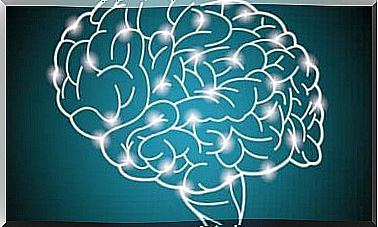Neurolinguistic Programming (NLP): What Is It And How Does It Work?

Neurolinguistic Programming (NLP) was designed by Richard Bandler and John Grinder in California in the 1970s. The makers claim that there is a connection between neurological processes, language and learned behavior patterns.
The creators of NLP chose three specialists, Fritz Perls, Virginia Satir, and Milton Ericksson, and found through several comparative studies that these three people possessed special communication skills that allowed them to get very good results with their patients.
They took this further by creating a collection of tools that would later be called neurolinguistic programming.
We’ve all reacted to a situation at one time or another and later our inner voice starts telling us that we should have said something or reacted in a different way.
In reality , the way we react and think is conditioned by a neurological map, which encodes and stores our way of reacting to a particular situation. That map is made up of our past, present, and future, and through it we create our beliefs, lessons, and learned behaviors.
The structures of our minds are so entrenched in us that we cannot influence them, at least not consciously.
The mind works on two levels: the conscious (logical thinking) and the unconscious (automatic functions).

The conscious mind is that part that is constantly alert, which allows us to remember, for example, dates and names of people. And the subconscious is the part of the brain that activates all the behaviors, beliefs, values, etc. that we have learned and that are part of our way of acting. It is the part of our mind that allows us to drive a car, write an email or open a window.
Our subconscious, in order to “draw” a new map, must act with a clear objective that answers the question “what do we want?”
And that’s exactly the complicated part, since we often don’t know what we want, we don’t know how to set our goal. For this we have to think of something that will really change our normal behavior in a given situation, something that is apparently impossible.
Questions that help us set our goals
Is it a positive goal?
In order for our programming to work, we must set a positive goal. Our goal should not begin with, “I don’t want to…”
Do you benefit from it?
Your goal should be something you do for yourself and depend on you, not others. For example, it is a very common goal for young people to graduate, but this is not their goal, but that of their parents. Moreover, you must control what you do to achieve your goal, so that it depends on you. We can’t set a goal like “the weather should be good this weekend” because it doesn’t depend on us.
How do you know you’ve reached it?
Think about what you will do at that moment and how you will feel. Visualize every action, every feeling this moment will generate in you, how it will smell, what taste it will leave in your mouth, what you will hear, how you will move, what you will do. In addition, in order to know whether we are achieving our goal, we will have to set short-term goals for ourselves and keep track of whether we achieve them. For example, if my goal is to find a job, a short-term goal should be looking at job openings and applying for something every week.
Is your goal specific?
You have to make clear what you want and what you don’t want. The more defined and detailed your goal is, the easier it will be to identify the steps needed to achieve it. For example, if we set our goal as “I want to find a job,” that’s a very general goal.
If we adjust the goal by adding details, we will have much clearer short-term goals so that we can achieve our long-term goal. For example: “From February 1, 2016, I will work for a company that deals with computer science and that pays me 1800 euros per month.”
What resources do you need to realize it?
In a general sense, think about the resources you already have and need: knowledge, objects, economic resources, help from others.
Once we have set our goal, we need to rethink our beliefs and values, what we have entrenched in ourselves and what is holding us back from achieving our dreams. We need to change our negative belief structures, which build obstacles on the path to our goal.
One of the biggest obstacles we find on the path to our dreams is the opinion of others. Remember that everyone has different points of view and we have to put ourselves in their shoes in an effort to understand their reasons.
All along the path to your goal, visualize your dream, think about what it will smell like, what you will hear, what you will touch, and especially the sensation and feeling of happiness that reaching this goal will bring in you. will create.
And achieve your dream! Make your ambition a reality!
Our subconscious, in order to learn a new program that will allow us to make our dreams come true, must see the reason or motive.

Neuro-linguistic programming, the process of learning, consists of four phases
- Stage 1: Unconscious incompetence. I don’t know what I can’t do.
- Stage 2: Conscious incompetence. I know what I can’t do.
- Phase 3: Conscious competence. I know what I can do.
- Stage 4: Unconscious competence. I don’t know what I can do.
To unlearn, we go from step 4 to step 2 and to relearn, from step 2 to step 4. Once the new program is learned, we will be able to apply it when needed.
That’s why NLP helps us create new mental programs that make many aspects of our lives easier and that help us work towards goals to fulfill our dreams and desires.
The greatest development in NLP has been made in interpersonal relationships and the world of work. In these two fields you can use NLP to train your skills, to overcome the obstacles in front of you, to resolve conflicts and to influence other people. But most of all, NLP gives you the tools you need to determine how you react to the people around you, how you perceive them, and thus to take action towards making your dreams come true.









